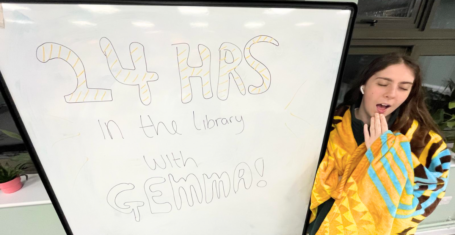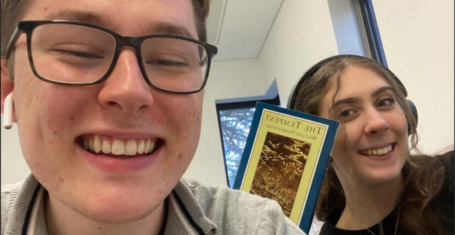
All the Black history in Exeter city you might not have known about
October marks Black History month, so here’s all you need to know about the local black history in Exeter
There is so much rich black history in the city of Exeter that many of us don’t know enough about. It’s nearly the end of Black History month, and it’s vital for us to recognise the stories and voices of black people within our past and present community that have been influential to the Exeter we know today. Through researching interviews, recent exhibitions and historical events, we have compiled a list of all the black history you should know about in Exeter, in hope of bringing awareness to the multicultural society we live in today.
Dorothea Hendy
Dorothea Hendy, the daughter of a black sea captain and a white Cornish woman was a local resident of Exeter for over 60 years. She was central to the local community and became notably remembered for making wedding dresses and cakes during the second world war. In 2000, Councillor Olwen Foggin interviewed Hendy for an exhibition on the history of Wonford and later her daughter Sue Evans was interviewed as a part of the project, ‘Telling our stories, finding our roots.”
With the end of the war, Dorothea moved to Exeter at age 21. She visited the employment agency and decided to go into light engineering. She was trained at Queen Street and her first job was at an aircraft factory on Tan Lane. Once she became qualified she was assigned to Sleemans in Longbrook terrace, where she oversaw barrack damages at Exeter airport. As well as this she worked part-time at the Blackhorse pub on Longbrook street (still a local’s favourite to this day.) During this time she lived nearby on Poltimore street where the John lewis car park now is.
One incident of racial violence that stuck with her was in the Spring of 1942, as American troops were stationed in Exeter. Dorothea relived her trauma of being violently chased home by American soldiers when her neighbour had unexpectedly gone into labour and asked her to go to the phone box to call an ambulance. On her way back she was chased by four white Americans all the way home. After they broke the door down, She had no choice but to climb over the garden wall and along two houses down, where her neighbour told her to jump. Dorothea recounts her fear of what could have happened to her, she remembers thinking to herself “if they were only playing they wouldn’t have broken the door down…but I knew that something would happen.” This horrific memory of racial violence resonates with millions of black people who lived in fear on a daily basis, that leaving their house could mean being terrorised for the colour of their skin.
Mrs Hendy played her part in the war, being involved in the Exeter Blitz of 1942 as a fire-watcher, where she would be stationed to look out for firebombs across the city. She recalls the memory of trying to save a soldier whilst she was observing her path, from Longbrook Street, up to York Road and along Queen’s Crescent. Dorothea noticed that a soldier was trapped in St Sidwell’s churchyard and rushed to save him by pulling him out but she couldn’t save him by herself as “he had a big tombstone stuck in his back, you see, I couldn’t move the tombstone.”
After D-Day Dorothea joined the Devon County council, taking place of a young man who went to join the Navy. She states in an interview that “it was all men in the council, as usual, I guess…they didn’t think a woman could do the job.” Despite this, she fulfilled the position and went on to the council and then to London for the Bow Council. This demonstrates the remarkable perseverance, of someone who didn’t let discriminatory behaviour surrounding their gender and racial identity stand in the way of striving for change in the community.
Dorothea Hendy was a remarkably generous and beloved woman throughout the community of Exeter. Being one of few black women living in Exeter, her story allows us to recognise the racial diversity within our community that continues to live on.
Frederick Douglas’ abolitionist speech in the royal subscription room at Northernhay place
In 1846, the former enslaved American abolitionist Frederick Douglas visited Exeter on his tour of Britain to promote the abolition of slavery. He made his speech “A call for the British nation to testify against slavery”, addressing the important role British people could play in ending slavery in America. This renowned speech was made in the royal subscription rooms at Northernhay Place, where he was met with “overwhelming enthusiasm”. The Exeter Western Times retells Douglas saying that the “hearty manner in which he had been received had removed what little embarrassment had arisen when he looked on this extraordinary and crowded meeting”.
Unfortunately, the historic building was demolished in the war by a firebomb, it was known to be situated between Boots and Waterstones. The passage leading from the High Street to Bailey Street and Northernhay place marks the long-vanished position of the subscription rooms.
The Royal Albert Museum has partnered with the students of the “Global lives: multicultural histories” module for their In Plain Sight exhibition, to create an online trail of the student’s alternative plaques, uncovering the hidden histories around Exeter. A plaque was created by Rosanna Ormandy to commemorate Frederick Douglas’ visit to Exeter; a moment of historic revelation and change for the city and the rest of the world.
Exeter’s connection with the slave trade
As a community, we have a moral responsibility to educate ourselves on our local black history, in order to better understand how it has influenced our lives today. Devon has strong links to the slave trade through industrial means; people at all levels of society were involved from sheep farmers to wool traders in Exeter. Bronze founders made manillas, a metal U-shape similar to a bracelet which was used as a currency during the slave trade.
In Lucy Mackeith’s study of “Local Black History: A beginning in Devon”, she hopes to provide valuable mythology for exploring black presence in all areas and provide evidence of the multi-cultural nature of society. Lucy Mackeith explains Exeter’s industrial role in the slave trade by describing the manufacturing of the manillas. She provides a photograph of the which were made in a bronze foundry on Cowick Street in Exeter. They now exist in the Royal Albert Museum as a key part of the Local History Exhibition.
Another connection to the slave tradition is the presence of sugar-processing factories in Exeter at the Bishop Palace and Goldsmith street. The RAMM has made modern reconstruction of the clay pots, displayed alongside fragments of the originals in the Local History exhibition. Evidently, the city benefitted from the economic growth of the transportation of sugar, arguably the foundations on which the system of slavery was built.









































